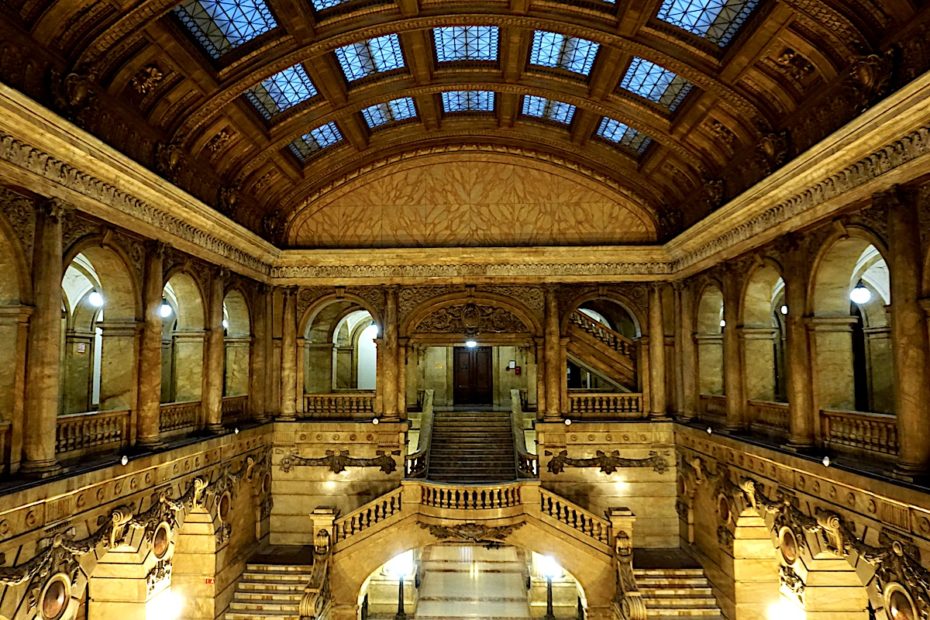
Paris, is that you? All signs would point to yes in this building, a bite sized double if ever there was one for the Opéra Garnier. Y’know, the one of Phantom of the Opera fame? With a dramatic double staircase made for cape swooshing, cinematic lamp posts and marble for days? Although the Beaux Arts splendour rings affirmative, this building tells a different story – thousands, in fact, including that of the long-standing love affair between the city of light, and the city that never sleeps. Turns out, this is the New York City Hall of Records, and as such utterly devoted to the locals who’ve built this city over the past 400 years. Luckily for us, every last detail of their lives has landed here, in the archives of the city’s biggest diary. Tread carefully, and you too will be able to leaf through the past…
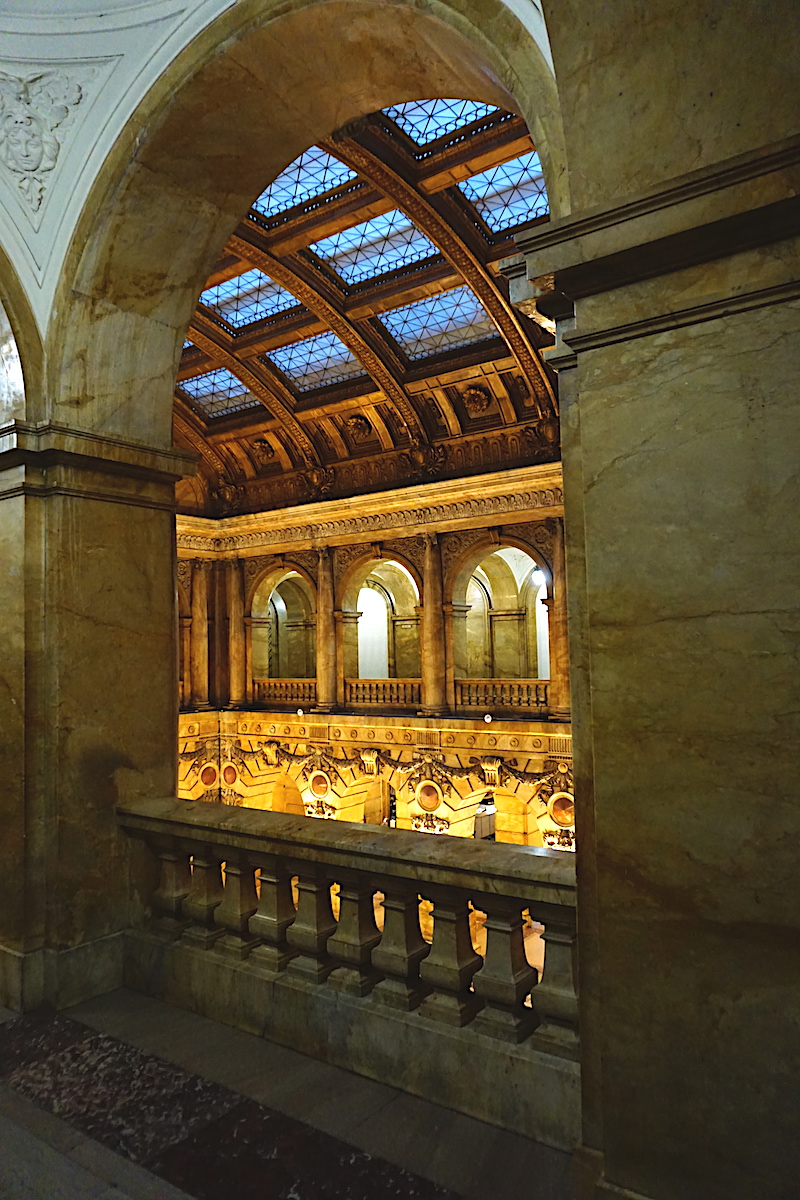
Also known as “the Surrogate’s Courthouse” (it also contains courtrooms), the Hall was designed in 1899 by John R. Thomas, with Horgan & Slattery, as part an initiative called “City Beautiful.” Today, it’s a building easily lost amongst the hustle and bustle of downtown Manhattan. But back then, it was the sparkling titan of the block…
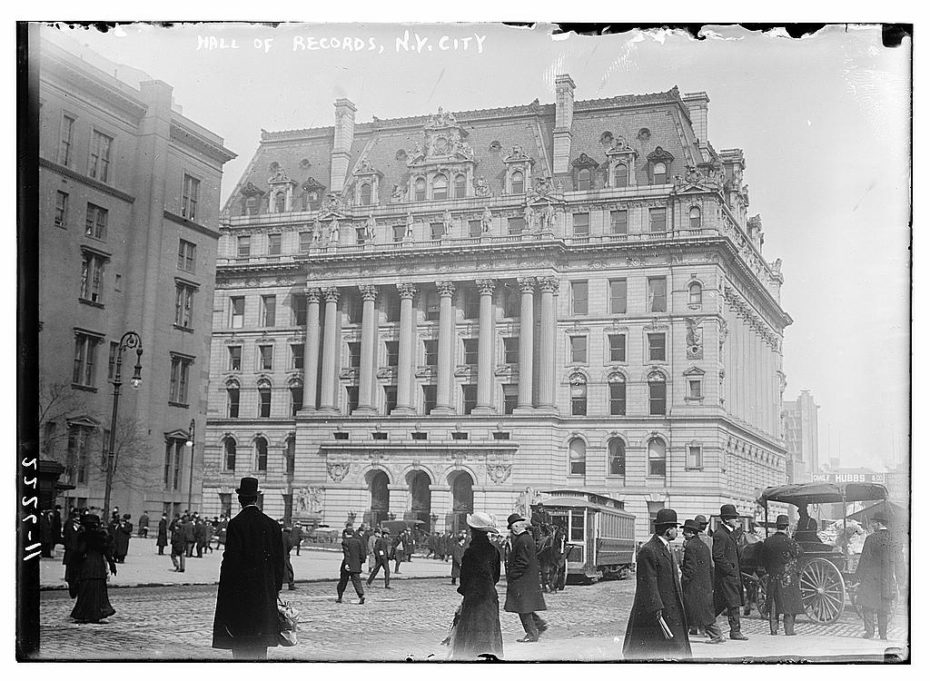
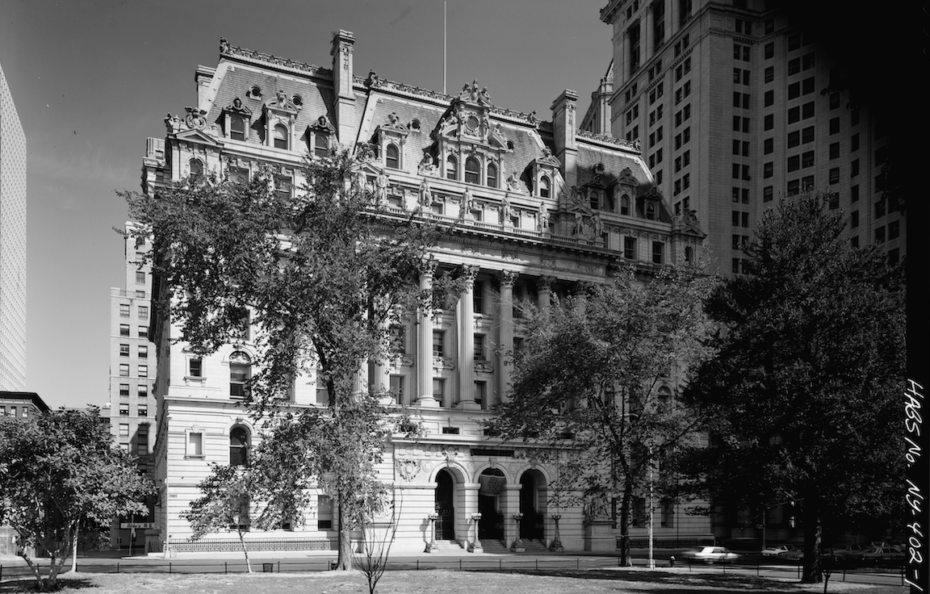
The interior was in fact modelled after the inside of the Paris Opera House, and dazzled New Yorkers when it opened in 1907. It was as if someone had built a portal, on the isle of Manhattan, to the cultural crown jewel of la Capitale…
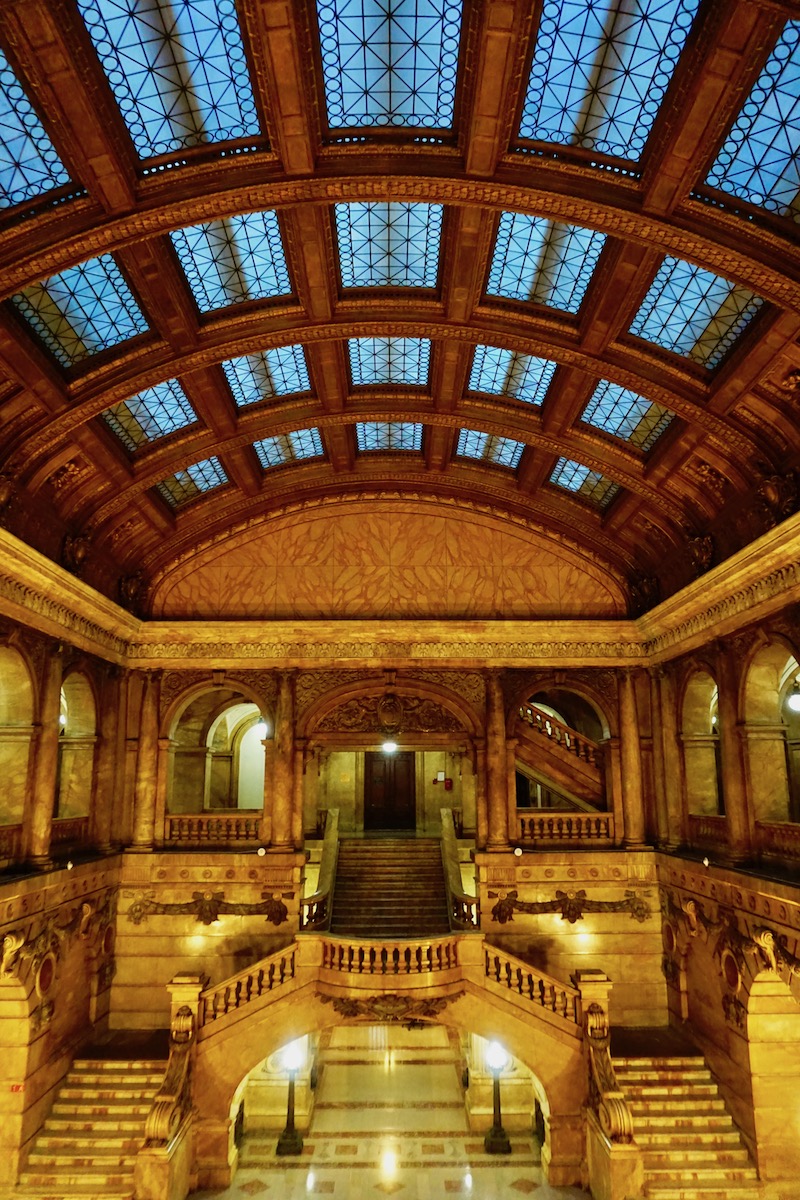
Let’s talk similarities. Most strikingly, there’s that unmistakable double staircase. As with the opera house, the beauty’s in the details here; check every vaulted ceiling and quiet corner for embellishments of the past…
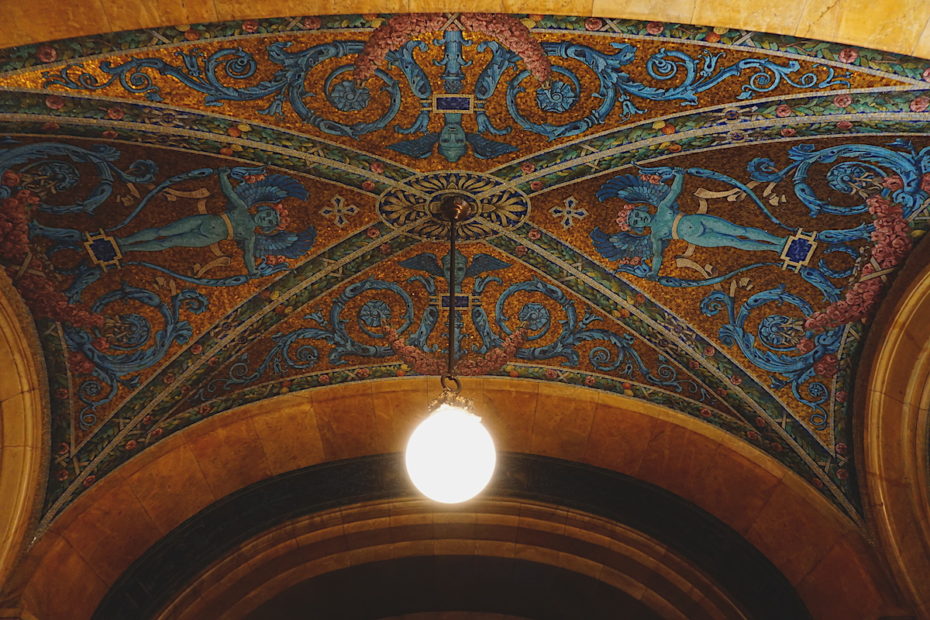
The interior’s foyer is almost entirely marble, with accents of mahogany, while the exterior boasts 54 sculptures, all by prominent artists in their day. Oh, and don’t forget to look up! That mansard roof would make even Napoleon go weak in the knees…
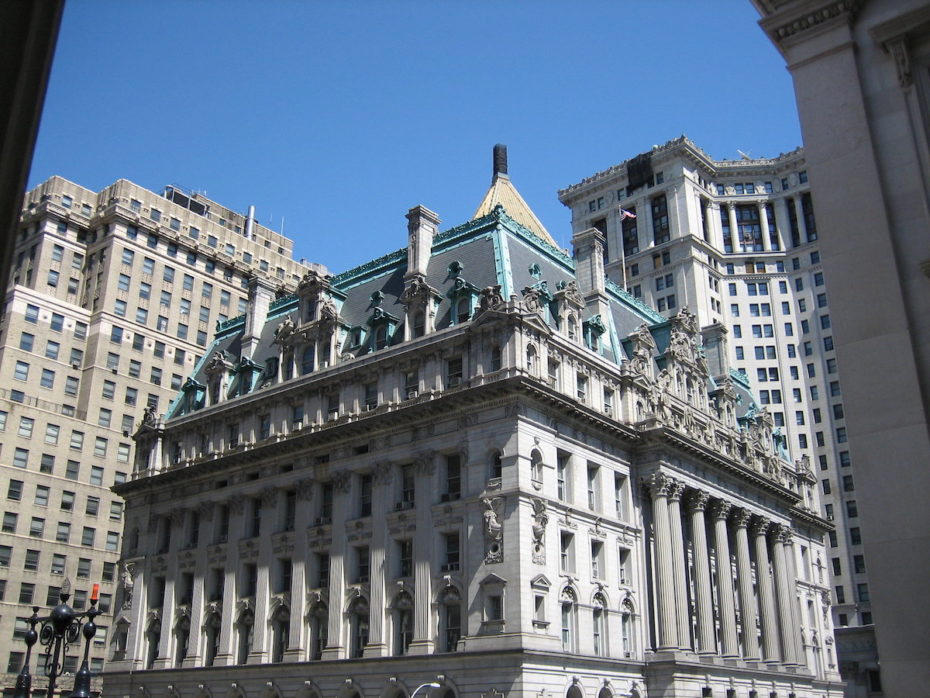
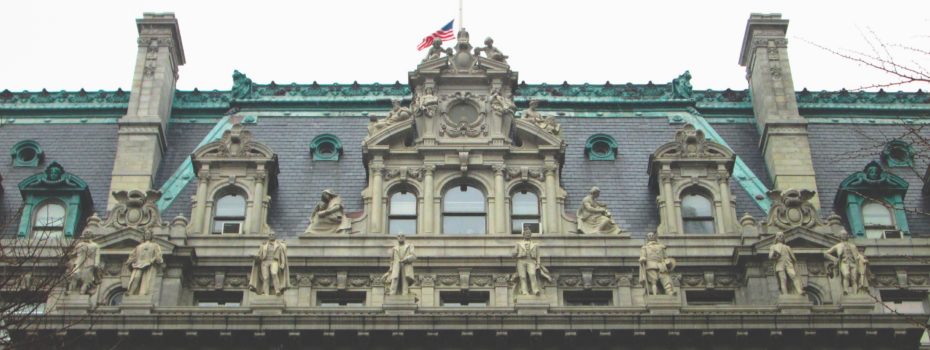
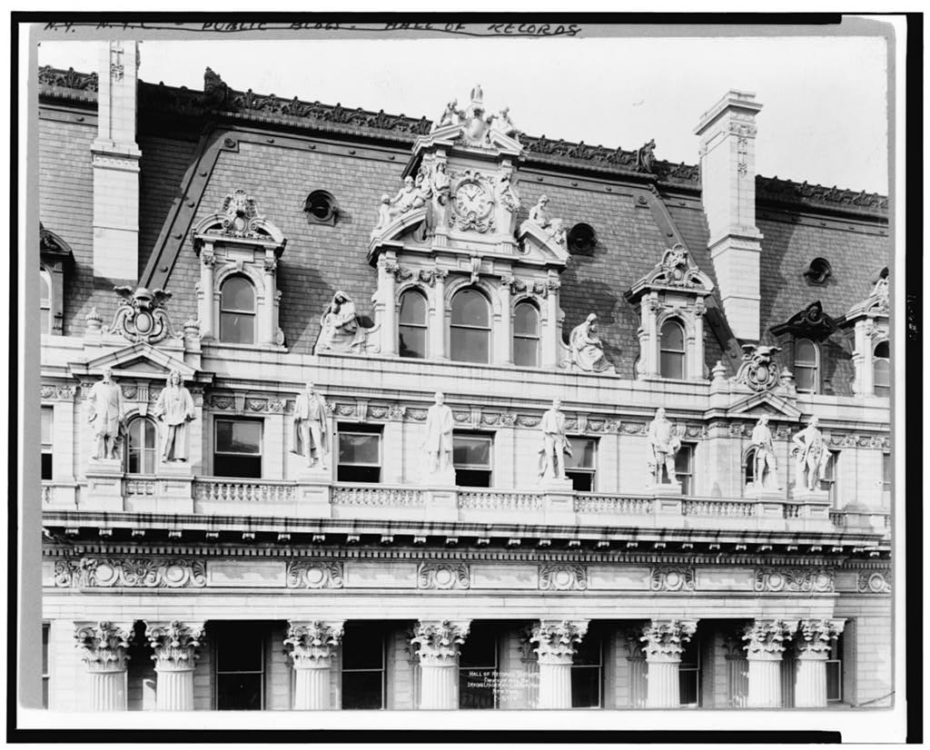
When you first enter, you’ll pass through security (just say you’re there to check out the archives) under the vaulted mosaic ceiling by the artist William de Leftwich Dodge. With its glitzy Egyptian iconography, it looks like it rolled right out of Sarah Bernhardt’s dreams.
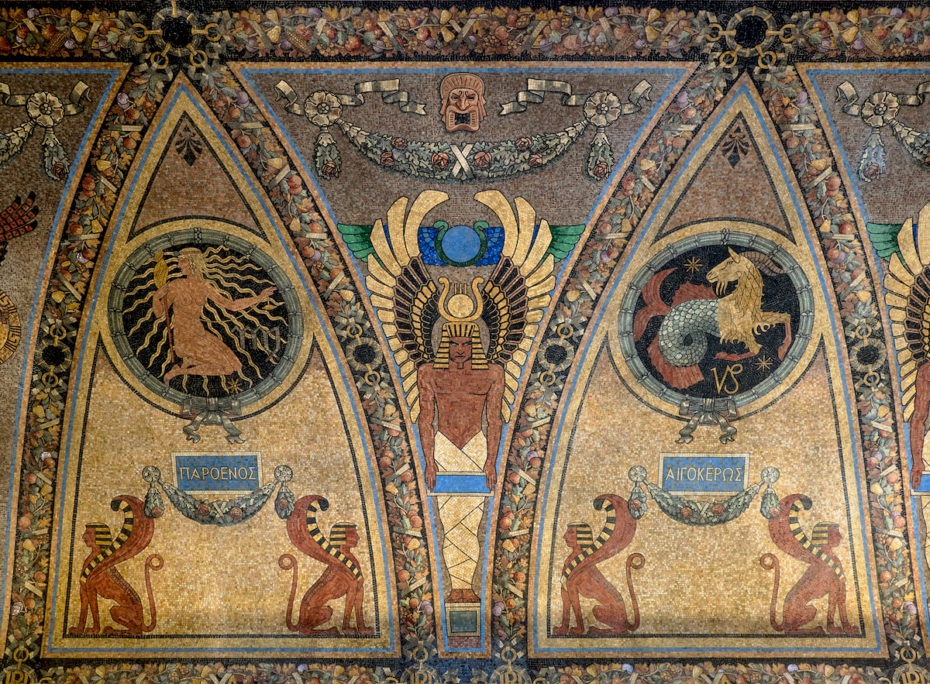
The actual Opéra Garnier, or Palais Garnier, was built from 1860-1875 at the whim of Napoleon III, and represented the cutting edge of Napoleonic design. Like the Paris Opera House, our hall also seems to live in its own enchanting habitat: a place bathed in a warm light on even the dreariest of days, with lamp posts standing watch at every turn, like elegant sentinels…
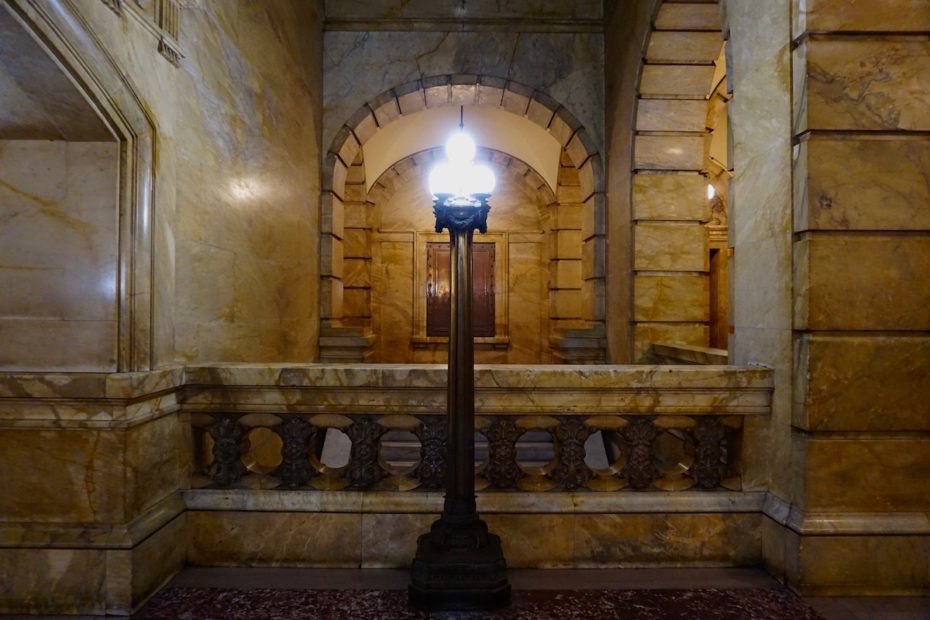
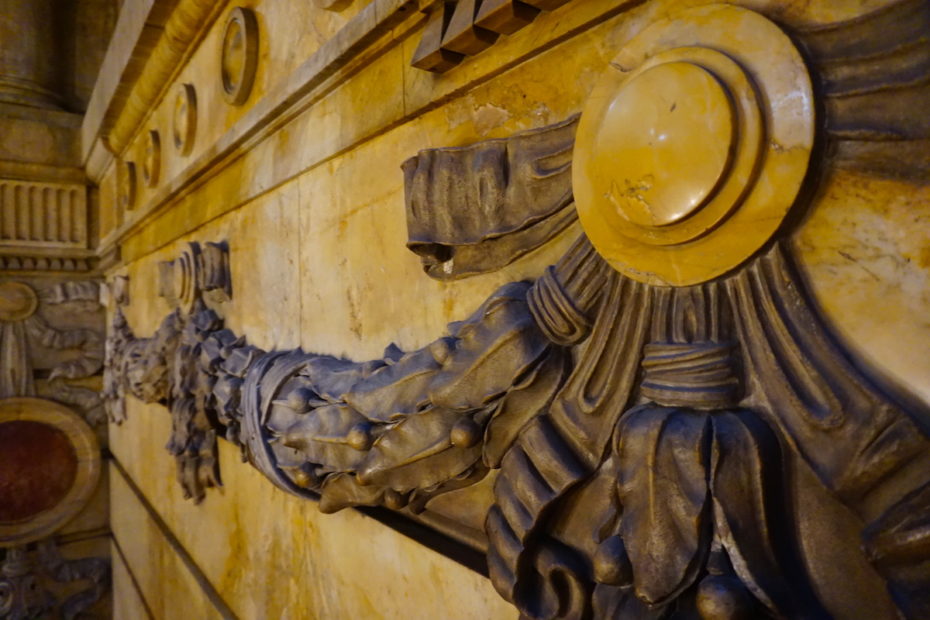
So…why? Why make this building such a cut above the rest? Because it’s a vault of 221,000 cubic feet of some of America’s rarest historical documents, that’s why. New York City would be nothing without the millions who’ve built it, so preserving their stories in a hall worthy of that grandeur is only fitting, no?
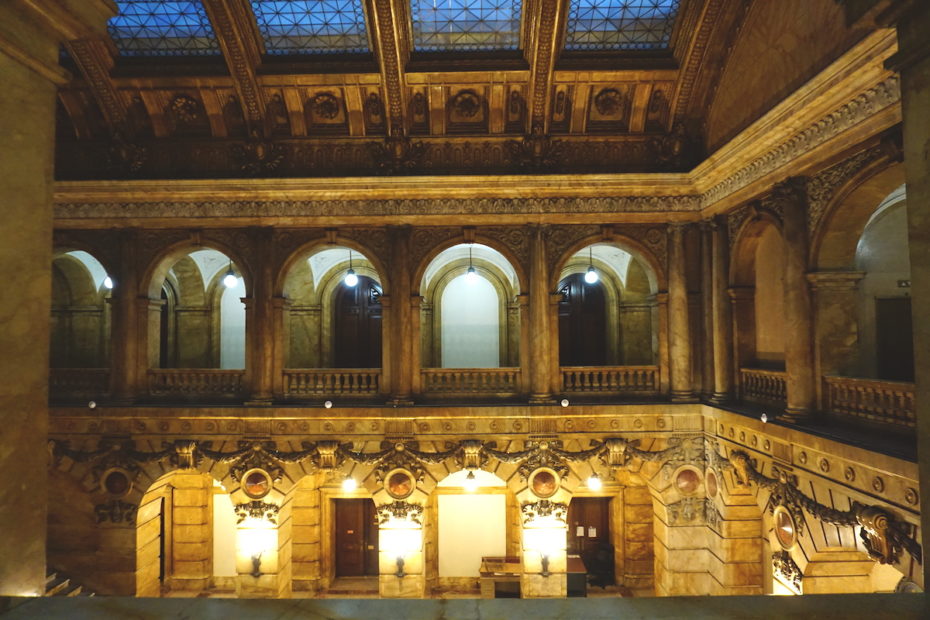
European materials and design inspiration are everywhere here, but not all encompassing. That pink marble? From Tennessee. The barrel skylight? Crafted in Chelsea, 20 minutes uptown. Even the granite comes from Maine.
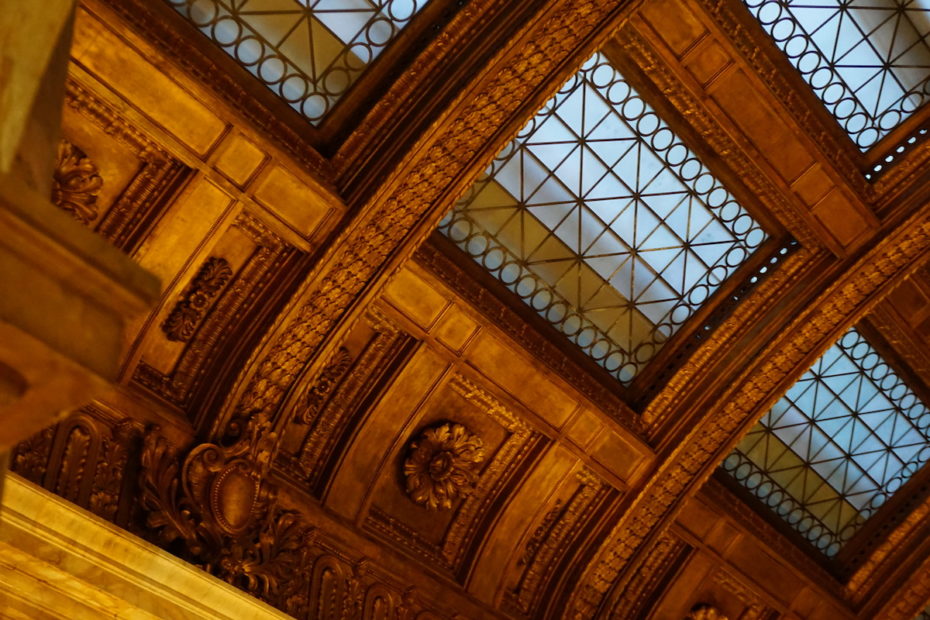
There are four or five levels to check out, and keep your eyes on the lookout for the defunct mail shoots, often hiding behind janitor carts…
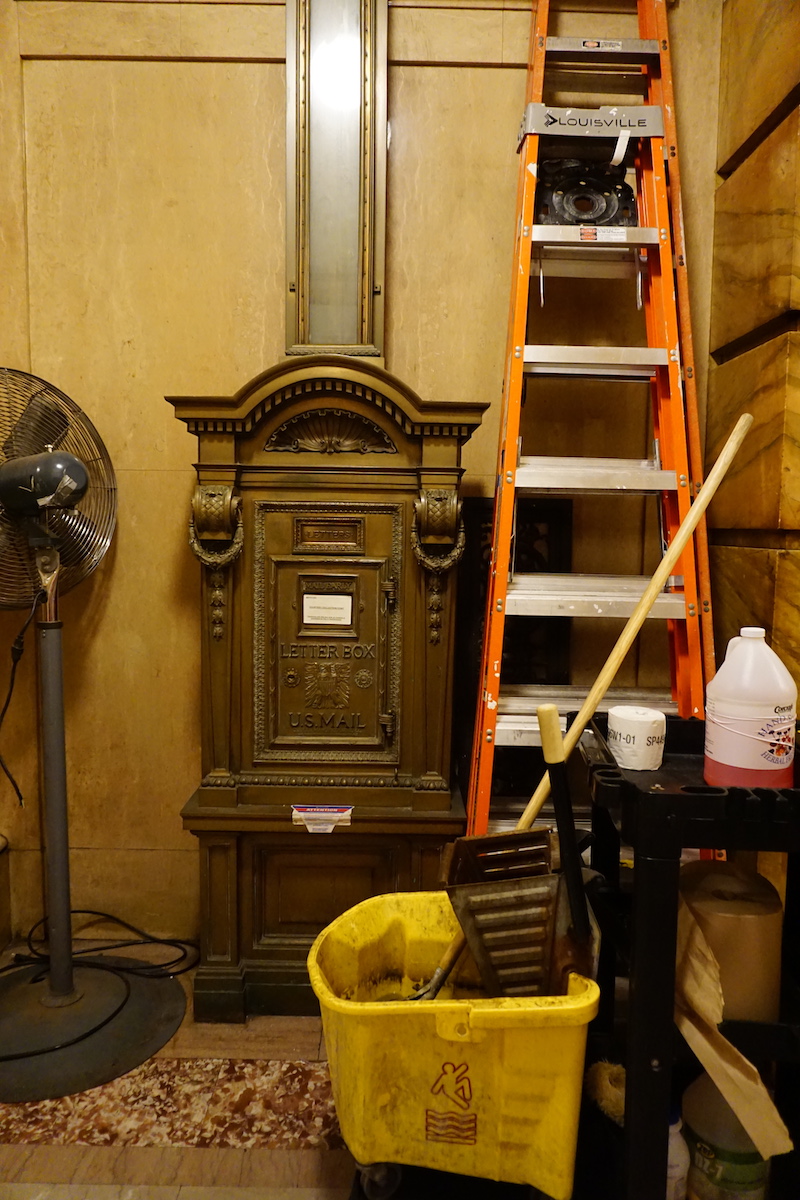

Then, of course, there are the countless New York stories at your disposal – that’s right, anyone can flip through the archives here! “What’s so special about conducting research [here],” says New Yorker and genealogist Caroline, who often comes to the Hall, “is the scope of the records it makes available to the public – visitors can trace the city’s history from the Dutch Colonial era to the Civil War all the way to the modern era, without ever leaving the building.” As soon as you go through security, you’ll hang a right down the hall into the archives…
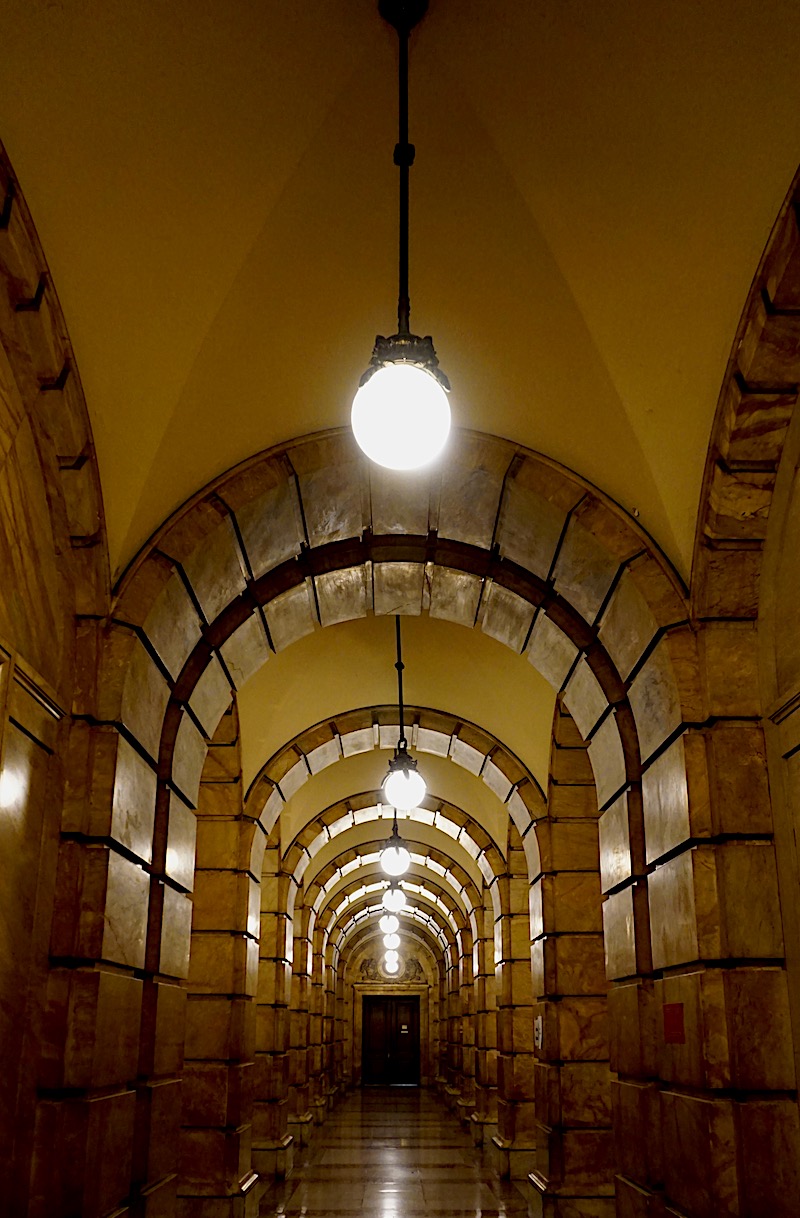
Once you sign in, you’ll get to peruse the documents and microfilms. Depending on how fragile and/or rare the documents you want to see are, you may need assistance. Our favourites included every “Brooklyn Bride / Brooklyn Groom” pairing in the city’s history, to the truly massive books dedicated to each borough…

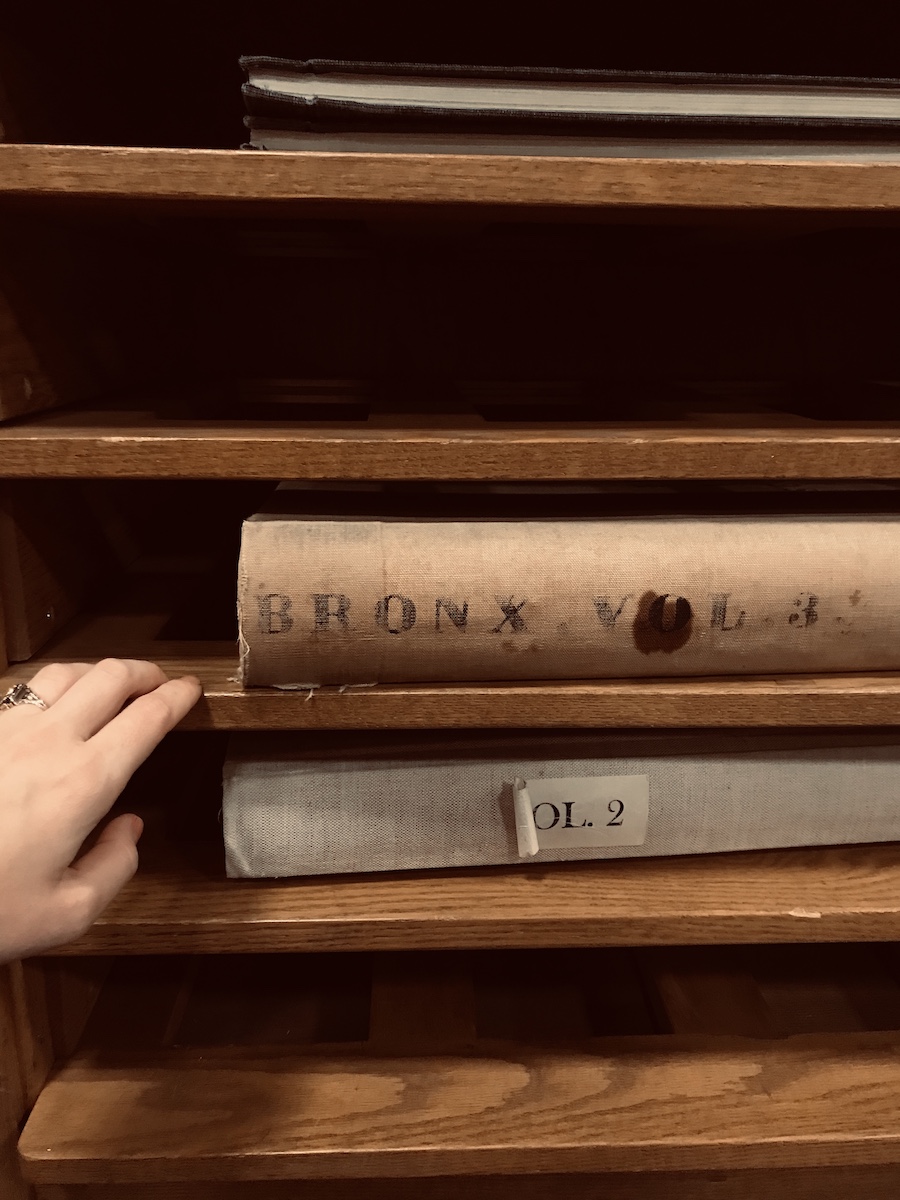
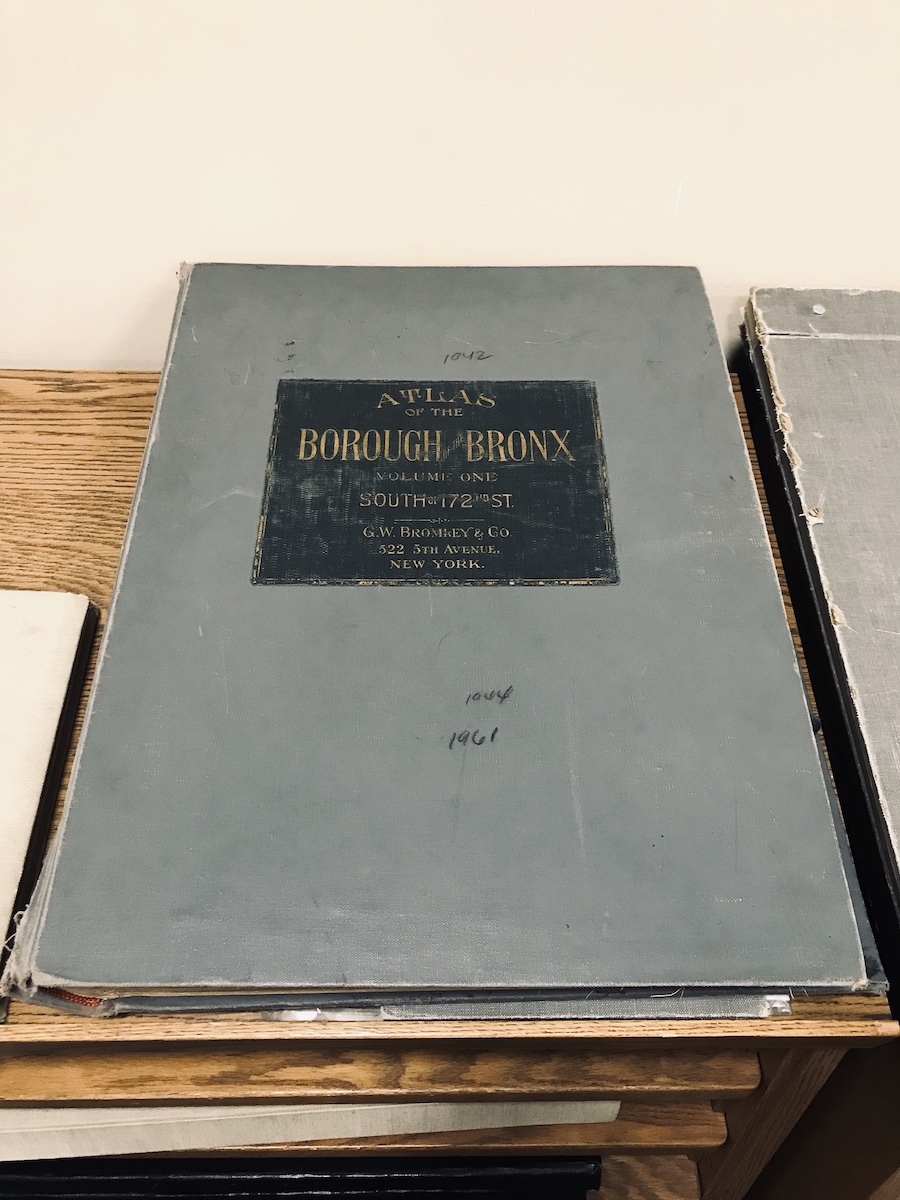
“Also,” adds Caroline, “here’s a rad tidbit – they have a collection there called “Bodies in Transit” that consists of ledgers with information about bodies transported through Manhattan in the mid-to-late 1800s. You can find the entry for Abraham Lincoln’s body when it passed through NYC on the way to Illinois.” Sure enough, in one corner is a stand filled with what looks like old cassette tapes, but is in fact death records.
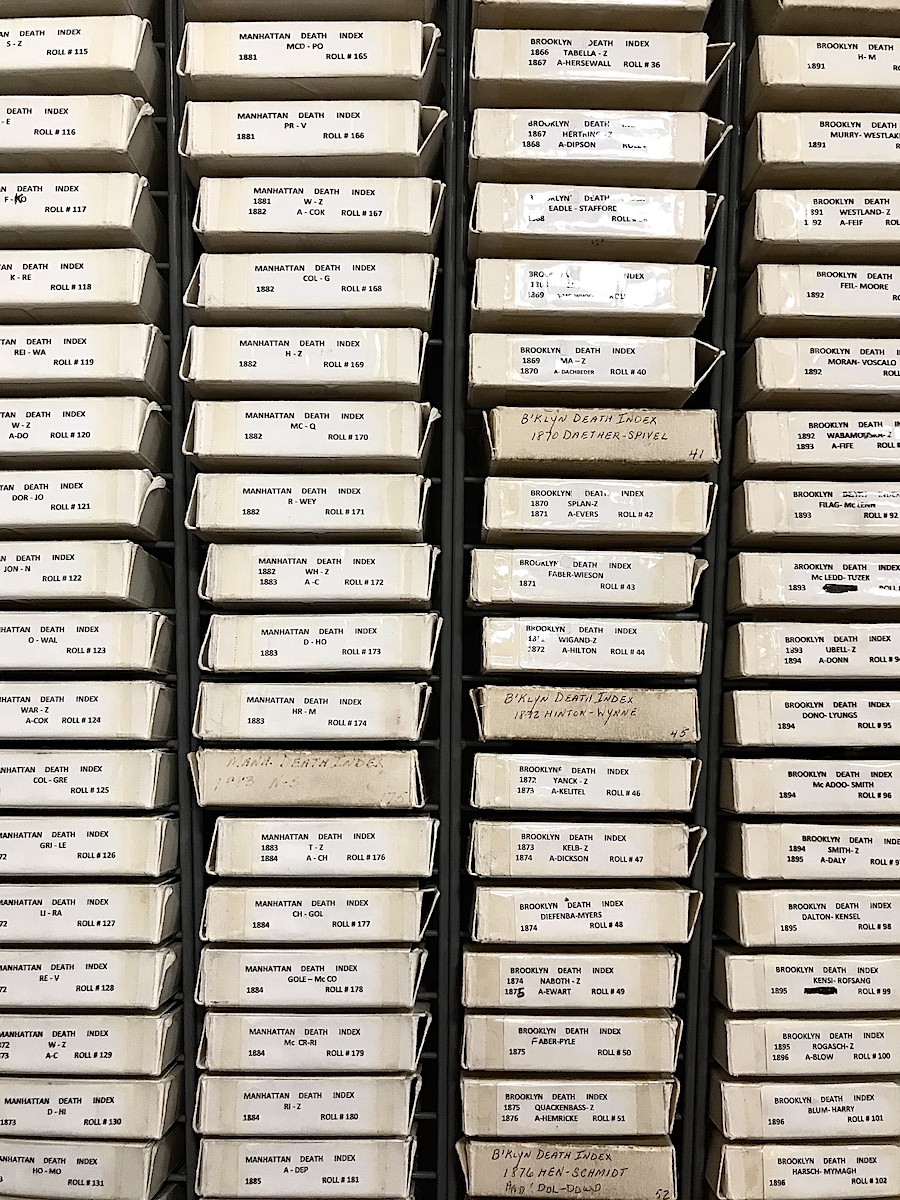
Some other notable collections? The “Let the Buyer Beware” and “Famous Trials”; “Writers Original Manuscripts” and “Who’s Who in the Zoo.” Hell, you can even look up the records of “burials of limbs,” like the gangrened leg of a guy named Frangesco Cascaldo Ecklord in 1910, or “the head of Edna Forbes” in 1924. To date, even the city doesn’t quite know why such fastidious bookkeeping was kept of every amputated limb in the city. But we’re sure glad they did.
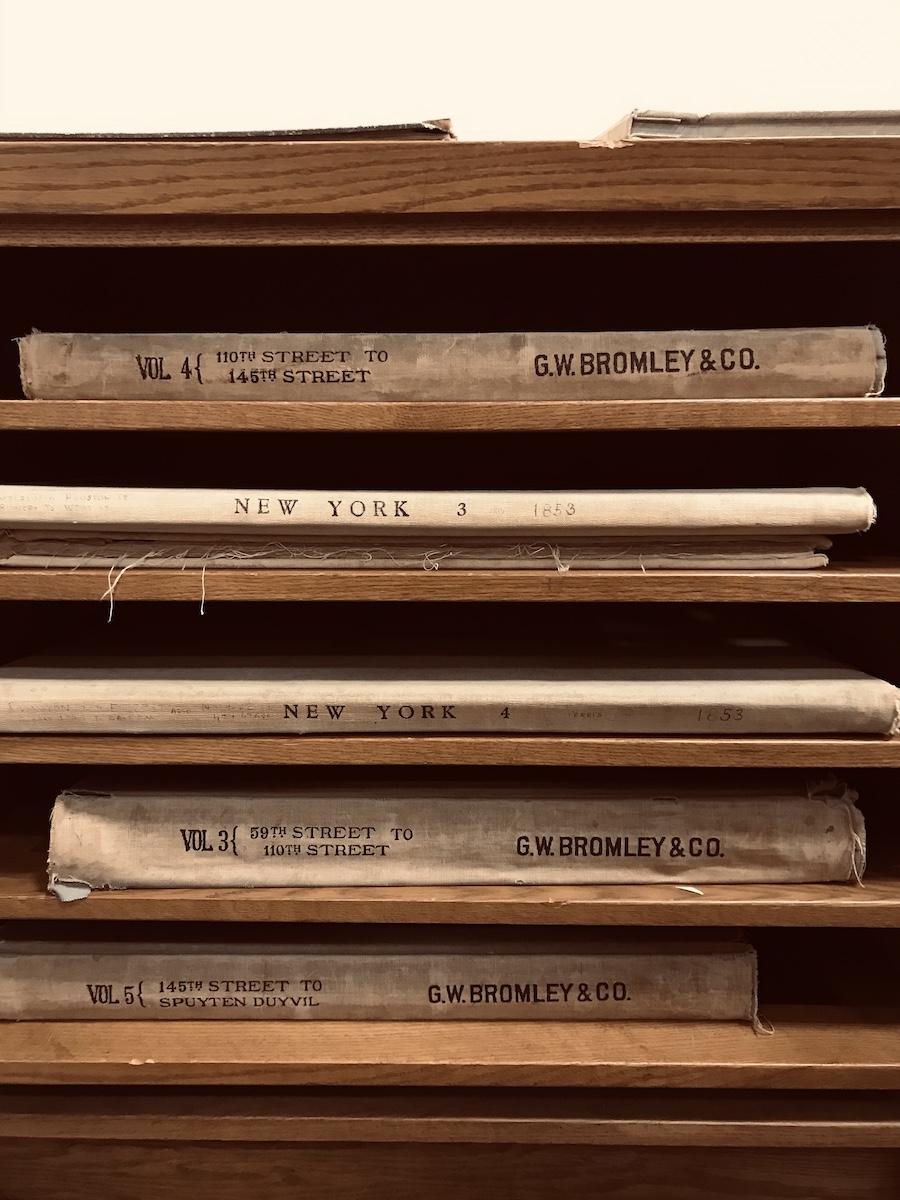
There’s also something to be said of the wonderfully curmudgeonly staff running the operation; don’t worry, just be polite and you’ll quickly get on their good side for life.
And there you have it. The secret to unlocking the tales of New Yorkers past and present, in a Paris-worthy backdrop no less – quite a winning rainy day combo if you ask us. Oh, and if you’re curious about unmasking Paris’ Phantom of the Opera? Come right this way…
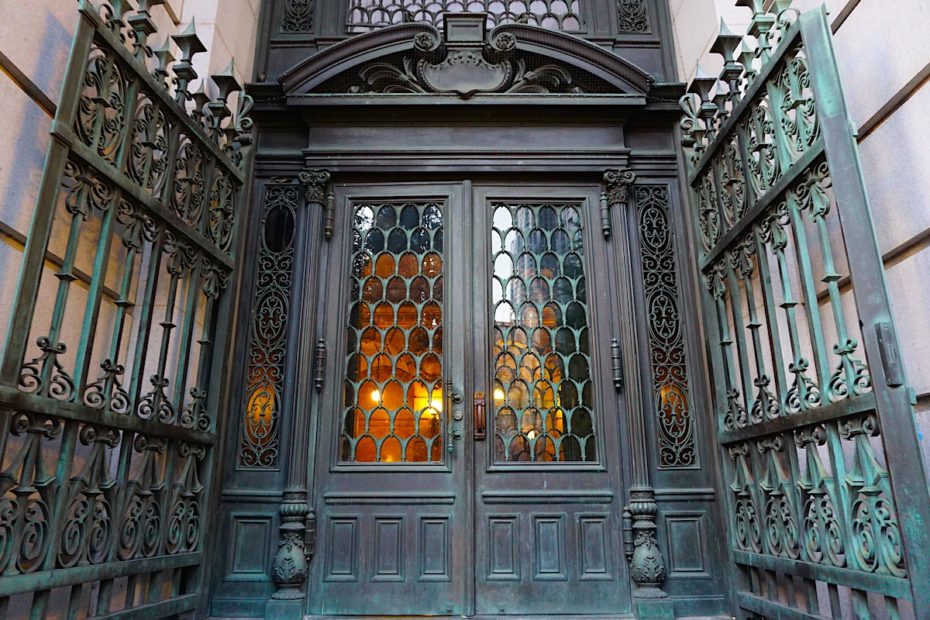
Visit the courthouse at 31 Chambers Street. Office hours are weekdays from 9:00am to 5pm
















